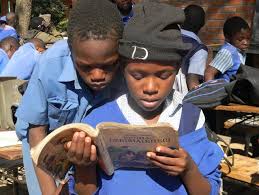Education is the cornerstone of any nation’s future, and this is particularly true for Nigeria. With over 44 million children enrolled in schools, Nigeria has one of the largest education systems in Africa. However, while the number of students is impressive, the availability of quality educational content remains uneven across the country. There is a stark contrast between urban and rural areas, private and public schools, and even among students in the same classrooms.

In recent years, many have looked to digital technology as the solution to Nigeria’s educational challenges. Tools such as tablets in classrooms, mobile apps for learning, and e-books are thought to revolutionize access to education. However, the reality is more complex. Many Nigerian children, particularly those in rural areas, lack access to the internet or the devices needed to take advantage of digital content. In some places, even reliable electricity is a challenge, making these digital solutions seem far-fetched.
Nevertheless, the digital revolution has made some headway, especially in urban areas. Private schools increasingly use platforms like Google Classroom to enhance learning. These platforms enable teachers to share resources, track students’ progress, and make learning more engaging. For example, animated videos and interactive lessons help students grasp difficult subjects, such as science, more easily than traditional textbooks.
There is growing awareness in Nigeria that imported educational content, while useful, does not fully meet the needs of Nigerian children. Textbooks from the United States or Europe may offer solid foundations in subjects like math or science, but they often fail to reflect the realities of Nigerian life. A child in rural Nigeria may struggle to relate to stories involving snow or autumn leaves.
To address this, Nigerian educators and content creators are working on locally relevant materials. TV shows like *Tales by Moonlight* blend storytelling with educational lessons, and apps like *uLesson* cater specifically to Nigerian students. This localized content helps children connect more deeply with what they are learning, using stories and examples that reflect their own experiences.
Nigeria’s linguistic diversity is both a strength and a challenge. With over 500 languages spoken across the country, many children face the challenge of learning in a language that is not spoken at home. While English is the official language of instruction in most Nigerian schools, many students speak languages like Hausa, Yoruba, or Igbo at home, creating a barrier to learning.
Some schools have started adopting multilingual education models, where children begin learning in their native language before transitioning to English. Research shows that children who start their education in their first language perform better academically. This approach could be key to improving literacy rates, particularly in regions where education has lagged behind.
Despite efforts to improve education, many challenges remain. Poverty is a significant barrier, especially in rural areas, where many families cannot afford to send their children to school. While primary education is officially free, hidden costs such as uniforms, books, and transportation still make it inaccessible to some.
Overcrowded classrooms are another issue, particularly in public schools, where classrooms may have over 50 students. In such environments, teachers struggle to give students the attention they need, and even the best educational content can’t overcome the lack of individualized instruction.
However, there are opportunities for improvement. Community-based learning initiatives, such as after-school clubs, are emerging in cities and villages, offering vocational training and life skills. These initiatives often focus on subjects that are neglected in the traditional curriculum, such as coding or environmental education.
The future of educational content for Nigerian children is promising. Blended learning models that combine digital tools with traditional teaching methods, along with locally produced content that speaks to Nigerian realities, are helping to improve education. Multilingual approaches that acknowledge the linguistic diversity of the country could unlock the full potential of Nigeria’s children.
With continued investment and innovation, Nigeria’s young population can be equipped to become the leaders and thinkers of tomorrow. It all starts with providing the right educational content today.



